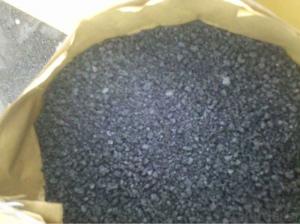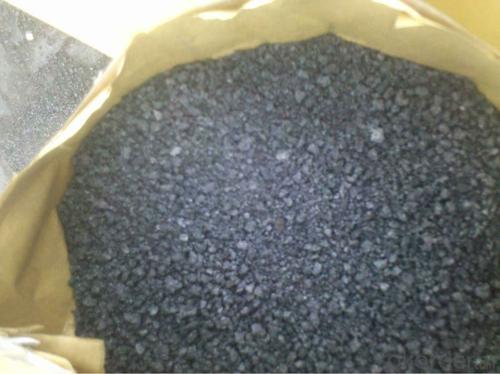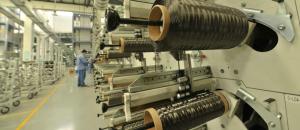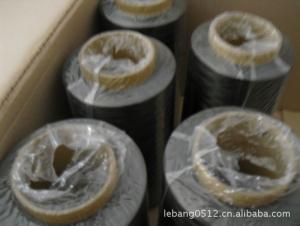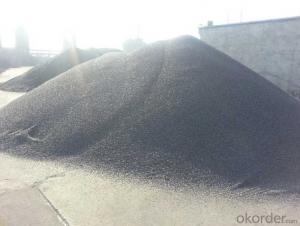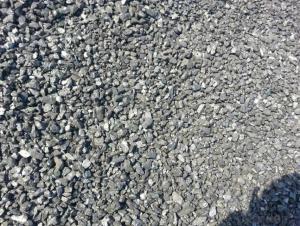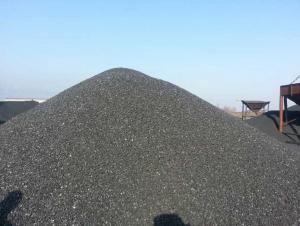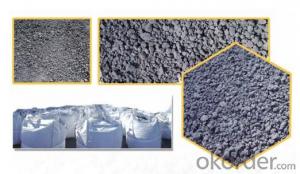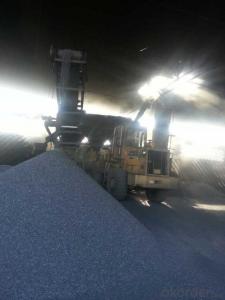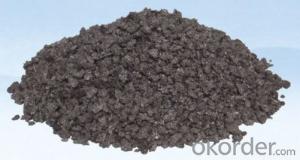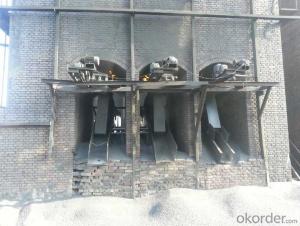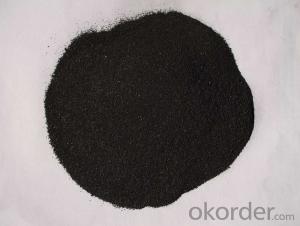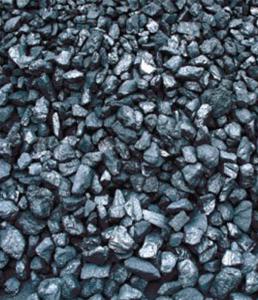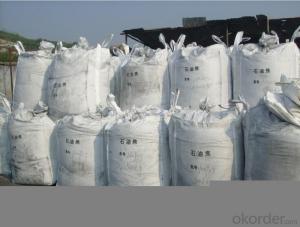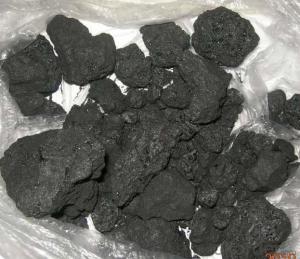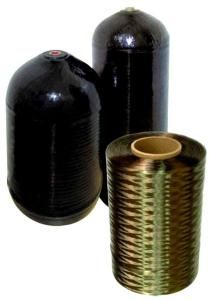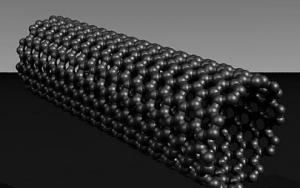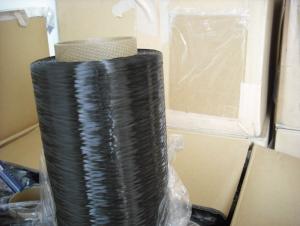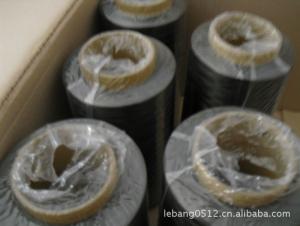Gas Calcined Anthracite FC90-95/Carbon Raiser for Iron & Casting
- Loading Port:
- Tianjin
- Payment Terms:
- TT OR LC
- Min Order Qty:
- 0 m.t.
- Supply Capability:
- 100000 m.t./month
OKorder Service Pledge
OKorder Financial Service
You Might Also Like
Packaging & Delivery
| Packaging Detail: | 25kgs/50kgs/1ton per bag or as buyer's request |
| Delivery Detail: | Within 20 days after receiving corect L/C |
Usage
Calcined Anthracite is produced using the best Anthracite-Taixi Anthracite with low S and P, It is widely used in steel making and casting.
Feature
--Low ash and sulfur contain
--Reduce needs for expensive melt additives.
--Increased dissolution rate over anthracite blends
--Reduces slagging time, labor and disposal cost
--Extends the life of the furnace lining, reduce maintenance cost and increase production yield.
Specifications
Calcined Anthracite
Fixed carbon: 90%-95%
S: 0.5% max
Size: 0-3. 3-5.3-15 or as request
PARAMETER UNIT GUARANTEE VALUE | |||||
F.C.% | 95MIN | 94MIN | 93MIN | 92MIN | 90MIN |
ASH % | 4MAX | 5MAX | 6MAX | 7MAX | 8MAX |
V.M.% | 1 MAX | 1MAX | 1.5MAX | 1.5MAX | 1.5MAX |
SULFUR % | 0.5MAX | 0.5MAX | 0.5MAX | 0.5MAX | 0.5MAX |
MOISTURE % | 0.5MAX | 0.5MAX | 0.5MAX | 0.5MAX | 0.5MAX |
Size can be adjusted based on buyer's request.
Picture
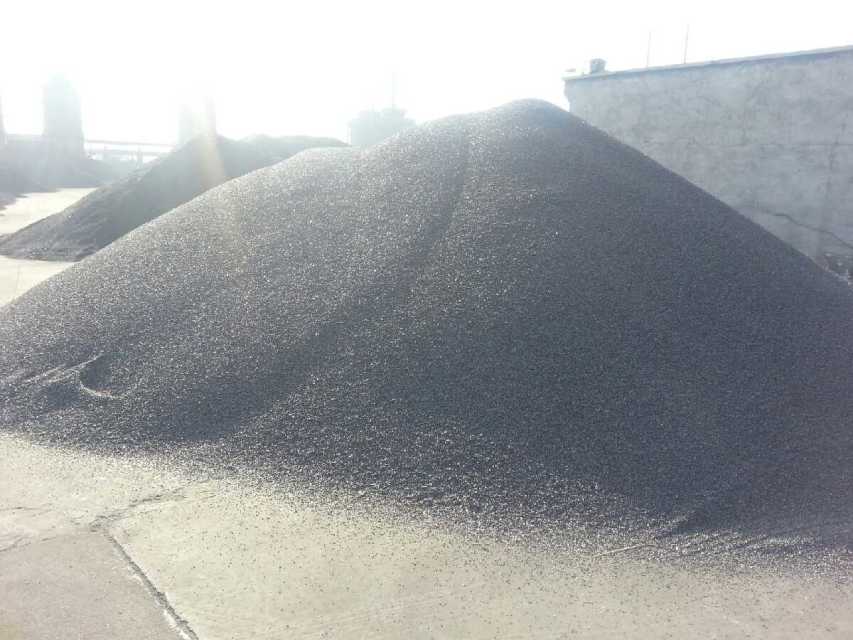
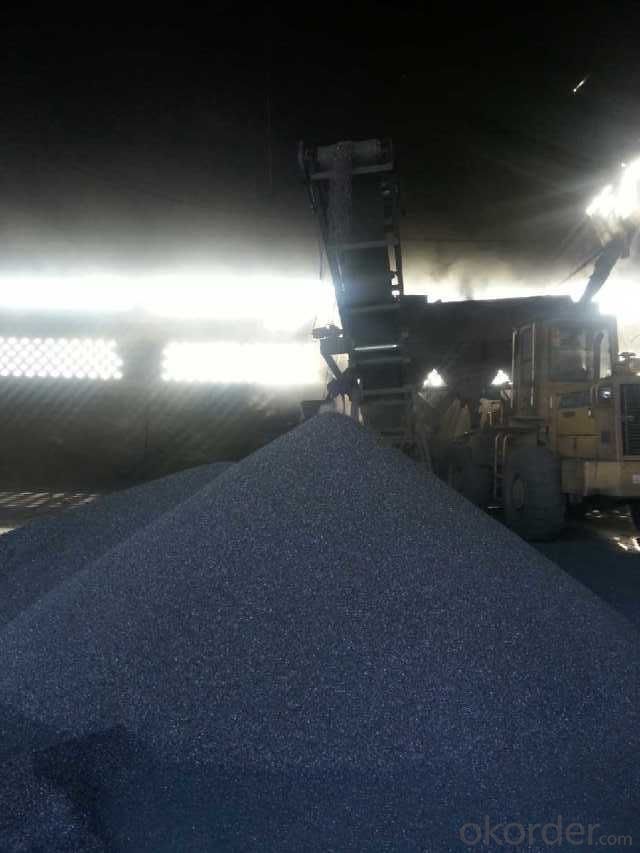

We can supply below furnace charges, please feel free to contact us if you areinterested in any of any of them:
Coke (Metallurgical, foundry, gas)
Calcined Anthracite with fixed carbon from 90% to 95%
Calcined Petroleum Coke
Graphite petroleum coke
Amorphous Graphite
- Q: What is carbon neutral certification?
- Carbon neutral certification is a process by which an organization, product, or service is evaluated and verified to have a net-zero carbon footprint. This means that the entity in question has taken significant measures to reduce its greenhouse gas emissions and has offset the remaining emissions through the purchase of carbon credits or investments in projects that mitigate or remove carbon dioxide from the atmosphere. To achieve carbon neutrality, the organization or product undergoes a rigorous assessment that includes measuring its carbon emissions, setting reduction targets, implementing initiatives to reduce its carbon footprint, and tracking progress. Once the emissions have been reduced as much as possible, any remaining emissions are offset by investing in verified projects such as reforestation, renewable energy, or energy efficiency projects that remove or reduce greenhouse gases from the atmosphere. The certification process is typically carried out by an independent third-party organization that evaluates and verifies the organization's carbon neutrality claims. This ensures transparency and credibility in the certification process. Once certified, the organization or product can use the carbon neutral label to demonstrate its commitment to environmental sustainability and responsible carbon management. Carbon neutral certification is important as it provides a standardized and recognized way for organizations and products to demonstrate their commitment to combating climate change. It allows consumers and stakeholders to make informed choices by supporting entities that have taken concrete steps to reduce their carbon emissions and contribute to a more sustainable future. Additionally, carbon neutral certification encourages organizations to adopt sustainable practices and invest in projects that have a positive environmental impact, thereby accelerating the transition to a low-carbon economy.
- Q: How is carbon used in the manufacturing of electronics?
- Carbon is used in several ways in the manufacturing of electronics. One of the primary uses of carbon in electronics is as a key component in the production of carbon nanotubes. These nanotubes have exceptional electrical conductivity and mechanical strength, making them ideal for use in various electronic devices. For instance, carbon nanotubes can be used to create high-performance transistors, which are essential components in computer chips. Additionally, carbon is utilized in the manufacturing of batteries for electronic devices. Carbon-based materials, such as graphite, are commonly used as the anode material in lithium-ion batteries. This is because graphite can store and release lithium ions efficiently, allowing for the rechargeable nature of these batteries. Furthermore, carbon is employed in the production of conductive coatings and inks used for printed circuit boards (PCBs). Carbon-based materials, such as carbon black or carbon nanotubes, are added to these coatings and inks to enhance their electrical conductivity. This enables the proper flow of electrical signals throughout the circuitry of electronic devices. In summary, carbon plays a crucial role in the manufacturing of electronics. It is used in the production of carbon nanotubes for high-performance transistors, as anode material in lithium-ion batteries, and in conductive coatings and inks for printed circuit boards. These applications highlight the versatility and importance of carbon in the electronics industry.
- Q: What are the impacts of carbon emissions on natural disasters?
- Natural disasters are significantly worsened by carbon emissions, leading to increased frequency and intensity. Carbon emissions have a major effect on global warming and climate change, as they cause the Earth's temperature to rise by trapping heat in the atmosphere. This temperature increase results in various weather pattern changes, which ultimately increase the occurrence and severity of natural disasters. One of the most evident consequences of carbon emissions on natural disasters is the stronger and more destructive hurricanes and tropical storms. These storms gain more energy from warmer ocean temperatures, making them more powerful. Additionally, higher temperatures lead to increased evaporation, resulting in heavier rainfall during storms and a higher risk of flooding and landslides. Carbon emissions also contribute to the melting of glaciers and polar ice caps, causing sea levels to rise. This rise in sea levels makes coastal areas more susceptible to storm surges and flooding during hurricanes and typhoons. Low-lying regions and island nations are particularly vulnerable, as they face the potential loss of their land due to rising waters. Moreover, carbon emissions play a role in the occurrence and severity of wildfires. Rising temperatures dry out vegetation, creating ideal conditions for wildfires to ignite and spread rapidly. These wildfires can devastate large areas of land, destroying ecosystems, homes, and livelihoods. Another consequence of carbon emissions on natural disasters is the disturbance of weather patterns. Climate change alters rainfall patterns, leading to longer and more severe droughts in some regions and more frequent and intense rainfall events in others. These changes in precipitation patterns can result in prolonged droughts, water scarcity, and a higher risk of wildfires in some areas, while others face increased flooding and landslides. In conclusion, carbon emissions have a profound impact on natural disasters. They contribute to global warming and climate change, intensify hurricanes, increase the risk of flooding, raise sea levels, fuel wildfires, and disrupt weather patterns. It is crucial to reduce carbon emissions and transition to clean and sustainable energy sources to mitigate these impacts and protect our planet from the devastating effects of natural disasters.
- Q: How do plants and trees absorb carbon dioxide?
- Plants and trees absorb carbon dioxide through a process called photosynthesis. During photosynthesis, they use sunlight, water, and chlorophyll to convert carbon dioxide into glucose and release oxygen as a byproduct. This helps in reducing the amount of carbon dioxide in the atmosphere and contributes to maintaining a balance in the Earth's carbon cycle.
- Q: What are the different types of carbon-based pigments?
- There are several different types of carbon-based pigments that are widely used in various industries. Some of the most common types include carbon black, graphite, charcoal, and lampblack. Carbon black is a highly pure form of carbon that is produced by the incomplete combustion of hydrocarbon fuels. It is the most widely used carbon-based pigment and is known for its intense black color. Carbon black is used in a wide range of applications, including inks, paints, plastics, and rubber products. Graphite is another important carbon-based pigment that is known for its dark gray to black color. It is a soft and brittle material that can be easily crushed into a fine powder. Graphite is used primarily in pencils, as it leaves a smooth and consistent mark on paper. It is also used in other applications such as lubricants, batteries, and electrical conductors. Charcoal is a carbon-based pigment that is produced by burning wood or other organic materials in the absence of oxygen. It is known for its deep black color and is commonly used in art as a drawing medium. Charcoal can be easily manipulated and smudged on paper, allowing artists to create a wide range of tones and textures. Lampblack, also known as carbon black or soot, is a pigment that is produced by burning organic materials such as oil or wood. It has a deep black color and is often used in printing inks, coatings, and dyes. Lampblack is also used in various industrial applications, including as a coloring agent in plastics and rubber products. These are just a few examples of the different types of carbon-based pigments that are commonly used. Each type has its own unique properties and applications, making them versatile and essential in various industries.
- Q: Carbon fiber refractory?
- 3, pre oxidized carbon fiber cloth, can withstand 200--300 degrees of high temperature
- Q: How is carbon used in the production of carbon nanowires?
- Carbon is used as the primary building block in the production of carbon nanowires. These nanowires are created by controlled synthesis methods that involve the deposition of carbon atoms in a specific pattern. This can be achieved through techniques like chemical vapor deposition or electrochemical deposition. By manipulating the carbon atoms, researchers can form long, thin wires with a diameter on the nanoscale. These carbon nanowires possess unique properties, making them valuable for various applications, including electronics, energy storage, and nanotechnology.
- Q: What are the different colors of carbon-based gemstones?
- The different colors of carbon-based gemstones include white, yellow, brown, black, and the rare blue and pink diamonds.
- Q: How does carbon impact the global water cycle?
- The global water cycle can be significantly influenced by carbon through various mechanisms. One major way in which carbon affects the water cycle is through the process of photosynthesis. During photosynthesis, plants and trees absorb carbon dioxide from the atmosphere and convert it into oxygen and glucose. This not only contributes to the carbon cycle but also plays a vital role in the water cycle. When plants undergo photosynthesis, they release water vapor into the atmosphere via small pores called stomata. This water vapor contributes to the overall humidity in the atmosphere, leading to increased cloud formation. Clouds, in turn, play a critical part in the water cycle as they contain condensed water droplets that eventually precipitate. Furthermore, carbon dioxide is a greenhouse gas that contributes to global warming and climate change. As the Earth's temperature rises due to increased levels of carbon dioxide, it has an impact on the water cycle as well. Warmer temperatures can result in higher rates of evaporation, leading to more water evaporating from oceans, rivers, and lakes. This excess moisture in the atmosphere can lead to more intense rainfall events, causing floods and other extreme weather phenomena. Moreover, carbon dioxide can affect the acidity of water bodies. When carbon dioxide dissolves in water, it forms carbonic acid, which can lower the pH of the water. This process, known as ocean acidification, can have detrimental effects on marine life, especially organisms that rely on calcium carbonate for their shells and skeletons. These impacts can disrupt ecosystems' balance and have long-term consequences for the health and functioning of the global water cycle. To summarize, carbon exerts a profound influence on the global water cycle through processes like photosynthesis, greenhouse gas emissions, and ocean acidification. Understanding these interactions is vital for managing the environmental effects of carbon and ensuring the sustainability of the water cycle.
- Q: How does carbon dioxide affect the formation of clouds?
- Carbon dioxide plays a significant role in the formation of clouds through its impact on Earth's climate system. As a greenhouse gas, carbon dioxide traps heat in the atmosphere, leading to an overall increase in global temperatures. This rise in temperature alters various atmospheric processes, including cloud formation. One of the key ways carbon dioxide affects cloud formation is by influencing the water cycle. Warmer temperatures caused by increased carbon dioxide levels lead to enhanced evaporation of water from the Earth's surface. This increased evaporation results in a higher amount of water vapor in the atmosphere, which serves as the primary ingredient for cloud formation. Additionally, carbon dioxide affects cloud formation indirectly by influencing atmospheric stability and the vertical movement of air. Higher concentrations of carbon dioxide can alter the temperature profile of the atmosphere, with the lower atmosphere warming more than the upper atmosphere. This temperature difference can lead to changes in air density, causing air to rise or sink. Rising air creates conditions favorable for cloud formation, while sinking air inhibits it. Furthermore, carbon dioxide affects the size and properties of cloud droplets. Increased carbon dioxide concentrations can lead to changes in the microphysical properties of clouds, such as droplet size and concentration. Studies suggest that higher concentrations of carbon dioxide can result in smaller cloud droplets, potentially affecting cloud lifetime and precipitation patterns. It is important to note that the relationship between carbon dioxide and cloud formation is complex and still an active area of research. Scientists continue to study the intricate interactions between atmospheric gases, cloud formation, and climate change to better understand the future implications of carbon dioxide emissions on cloud dynamics and the overall climate system.
Send your message to us
Gas Calcined Anthracite FC90-95/Carbon Raiser for Iron & Casting
- Loading Port:
- Tianjin
- Payment Terms:
- TT OR LC
- Min Order Qty:
- 0 m.t.
- Supply Capability:
- 100000 m.t./month
OKorder Service Pledge
OKorder Financial Service
Similar products
Hot products
Hot Searches
Related keywords
